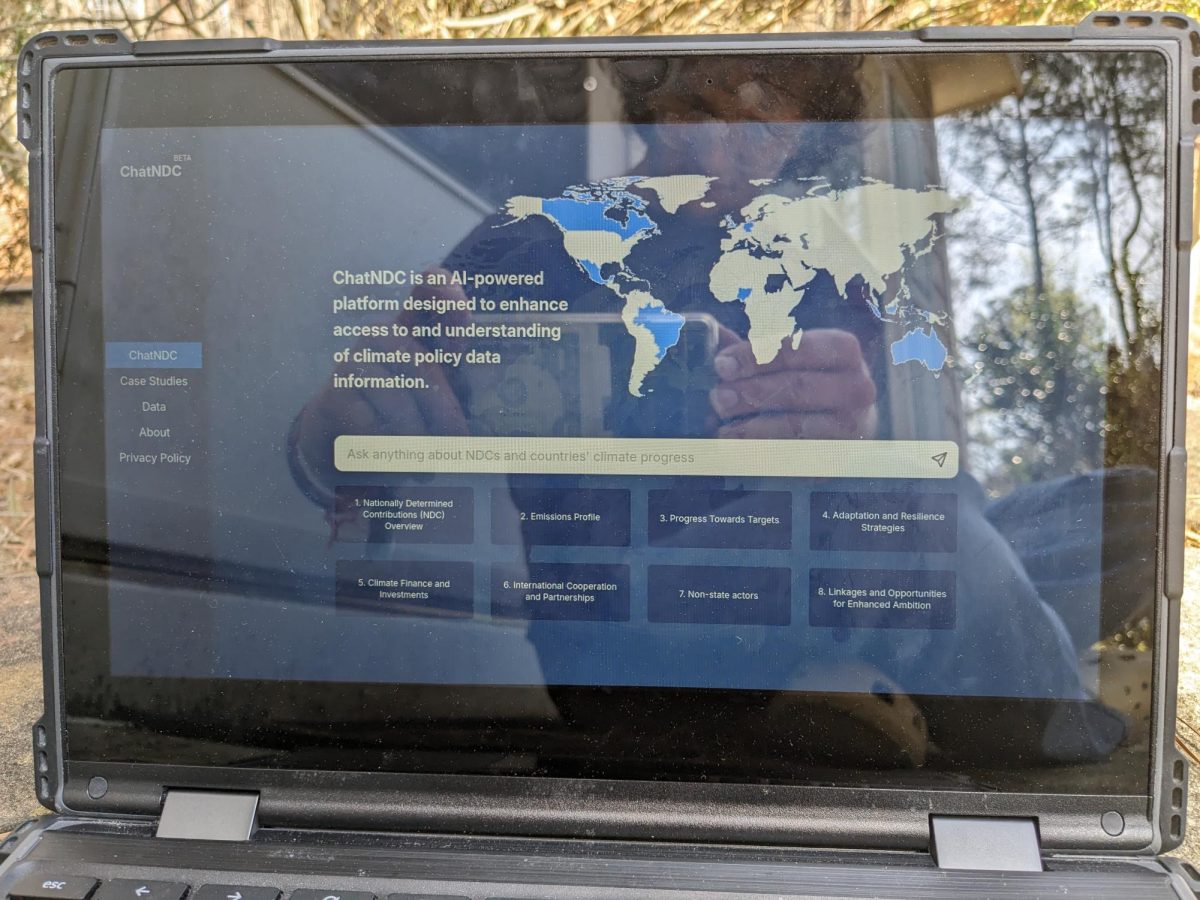ChatNDC is an artificial intelligence chatbot platform that specializes in compiling climate policy data. This platform and others like it fight climate misinformation and educate the public on an otherwise oversaturated topic.
Climate change is a very divisive issue. Social media and other avenues have allowed many perspectives to spread, many of which rely on unreliable and twisted narratives. Senior Talia Barbieri is the co-president of Wakefield High School’s Forces of Nature, a club dedicated to environmental awareness and sustainability. She is aware of the issues surrounding climate information and accessibility.
“The biggest issue with climate misinformation is [that] people don’t have the availability to get the real education, [with] true data and information,” Barbieri said. “Social media shares so many points of view. It can share some things that aren’t true and are exaggerations.”
Platforms such as ChatNDC have been created to address some of these issues. Though still in its introductory phase, this chatbot provides crucial data and information that would otherwise be inconvenient to access. The AI was created by researchers at the University of North Carolina at Chapel Hill to track climate data from several companies and organizations. This data is crucial in maintaining well-informed environmental decision-making.
The advent of this AI development paves the way for future generations looking to make the world more sustainable. Cecelia Case is a member of Forces of Nature that looks forward to AI’s impact on future environmental activism.
“There are so many [scientific] studies, and they’re written in a manner that the general public cannot consume,” Case said. “I like how AI is making that [information] more open. People who aren’t trained in the sciences [will] be able to access that information better.”
This AI technology, and others like it, is not without its pitfalls. AI is proven to consume copious amounts of electricity and clean water that would otherwise be put to other uses. This fact is especially concerning when nearly a quarter of the world’s population lack clean water and sanitation. AI data centers also produce tons of electronic waste, some of which can contain hazardous materials such as mercury and lead.
While it can be used to make positive changes toward sustainability, it’s important to consider the downsides of AI platforms. Hailey McMasters is a junior who understands the technology’s dangerous environmental footprint.
“I think that [AI] can give suggestions on how to live sustainably,” McMasters said. “[However], we also need to weigh in the fact that it is one of the leading causes of global warming right now.”
Despite its negative environmental effect, AI has the capability to encourage positive changes in realms outside of environmental sustainability. Catherine Strickland is a junior familiar with AI’s generative uses.
“I try not to use AI tools a lot,” Strickland said. “I just use them when I’m trying to get ideas for creative writing scenes [in] my books.”
ChatNDC is diligent in collecting proven data from reliable sources. However, the same cannot be said for every AI resource that currently exists on the market. It is extremely important to remain wary and conscientious of AI-generated content, for it may not always be as fool-proof as it seems.
“AI tends to gain a lot of information from what’s already published on the web, and there’s always going to be misinformation out there,” Barbieri said. “That’s always the risk [with this] because we don’t know where it’s getting its information from. You can hope that it’s a reliable source, but you can’t always guarantee that.”










